Top 20 rarest birds ever found at WWT sites
WWT wetlands are excellent places to find rare birds and over the years they’ve played host to some of the rarest in UK history. Almost every month, there is a new rarity to catch up with and there’s no better time to find your own, with autumn migration well underway.
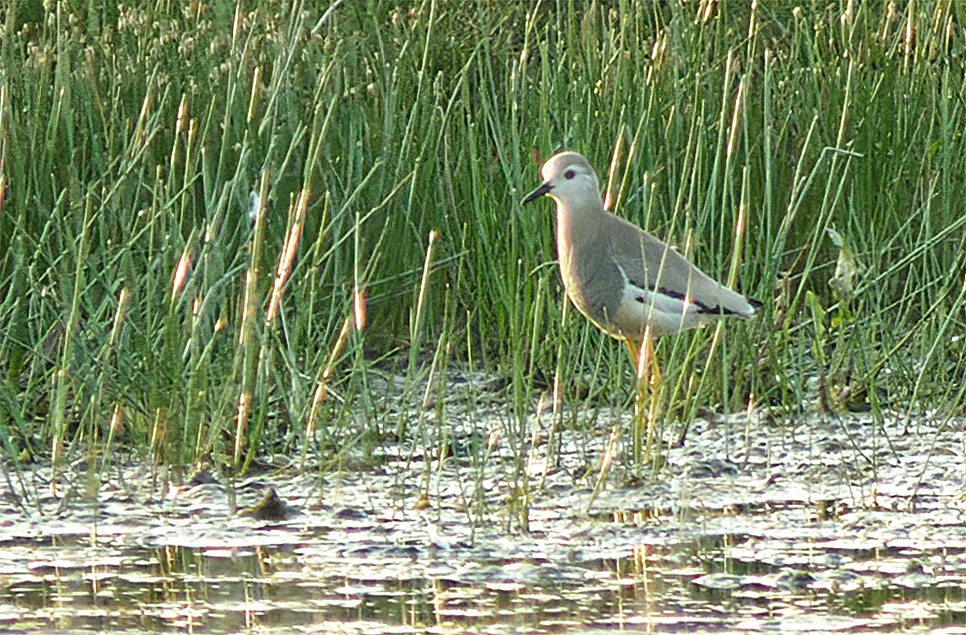
Up and down the country, WWT reserves have been attracting vagrants and overshoots since the days of Sir Peter Scott, with his early find of lesser-white fronted goose inspiring him to create the then Severn Wildfowl Trust at Slimbridge.
Here we look through decades of records, with data included from as far back as the mid-1800s. Changes in population and distribution have affected the rarity status of many species. Some species that previously occurred more regularly are now very rare and as a result appear lower down the order.
How do rarities reach us?
Vagrant birds can turn up on our shores due to a variety of reasons. In the case of American birds, it’s usually a westward-blowing storm that sweeps them across the Atlantic whilst they attempt to migrate south in autumn. Whereas birds breeding across Europe and into Asia can arrive on easterly winds.
Others, primarily Mediterranean-breeding species, are most often overshoots that arrive in the UK in the spring after wintering in sub-Saharan Africa and fail to stop at their usual breeding grounds due to warm southerly winds. They can also head further north in response to drought or other pressures, an increasing occurrence as the southern European climate warms. Some might simply migrate in the wrong direction, which mostly happens in the autumn – migrating north instead of south, or west instead of east.
As species’ breeding distributions change with climate change and they spread northwards into Europe, this can mean increasing UK records too.
Join us as we countdown the most surprising birds to have been seen at WWT.
20. Little bustard
Tetrax tetrax
243 UK records, 3 WWT records
Slimbridge 2019
We begin with a bird that you might not immediately associate with wetlands. Little bustard is widespread in Spain, with the closest breeding populations in central France (and much larger migratory populations across central Asia). There’s a seemingly high number of UK records on the books but most are pre-1900, with just 88 records since then and post-2000, there are just 6 records. It’s now much rarer than the historical numbers suggest at first glance.
So in June 2019 when one was flushed out of long grass by a Land Rover at Slimbridge, it was a fairly big deal. Good views were had by some birders, with the bird staying for three days. For the most part, it remained in long grass, meaning head-only or flight views. Some of which certainly weren’t bad...
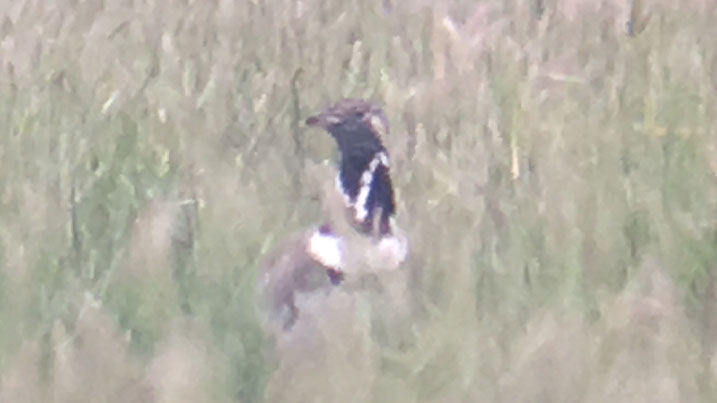
Little Bustard at WWT Slimbridge Gloucestershire on 23 June 2019 pic.twitter.com/a4AqkOVOy4
— Kenny Hills (@KennyHills17) June 23, 2021
Remarkably, the same individual was seen later that summer in West Yorkshire. You have to go back a long way for other WWT records of this species; Welney 1842 and 1848.
19. Red-breasted goose
Branta ruficollis
170 UK records, 17 WWT records
Slimbridge 1941
Onto our first goose species now and like the above mentioned bustard, red-breasted goose records are more common the further back in time we go. They breed in the Russian high Arctic, migrating to winter along the west coast of the Black Sea. With milder winters due to a warming climate, there’s less chance of them getting pushed across Europe towards us.
1941 was when the first Slimbridge bird was found, but not by Sir Peter Scott; he didn’t find one at Slimbridge until 1954. Slimbridge had recurrent records in 1959, 1963, two in 1967, 1969, and lastly in 1984.
Caerlaverock on the other hand came late to the game but scored 7 records between 1991 and 2012. Welney have seen just one record in 1995, as have Martin Mere in 2010.
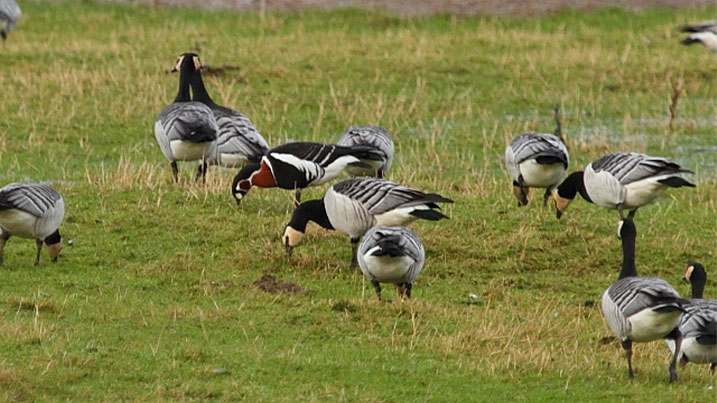
18. Pallid harrier
Circus macrourus
168 UK records, 3 WWT records
Slimbridge 2012
The only bird of prey in our countdown comes in the form of pallid harrier, a species that traditionally breeds in south-east Europe and central Asia, moving to winter across India and Africa.
The species appear to be increasing its range westwards and UK records show this. Only 12 records occurred before the year 2000. The Netherlands and Spain have recently seen breeding pairs, so this is a species to look out for that could well become more frequent.
Harriers are wanderers by nature, especially the younger birds, as the majority of UK records show. Our first record however was an adult male seen at Slimbridge briefly for one day in April 2012.
Then a juvenile female at Steart Marshes that stayed for 2 weeks in October/November 2014.
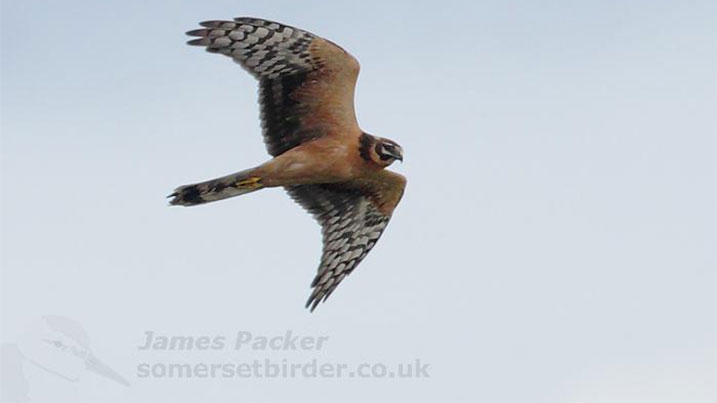
Most recently we saw a juvenile female bird at Welney which stayed for 2 weeks in September 2018.
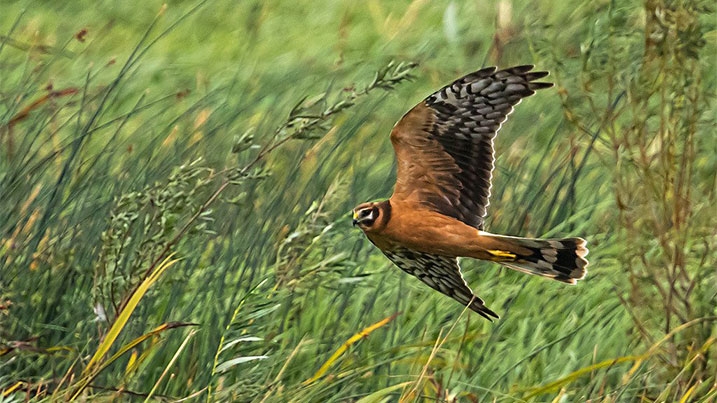
17. Marsh sandpiper
Tringa stagnatilis
164 UK records, 2 WWT records
Martin Mere 1974
Our first wader now as we look at marsh sandpiper; firstly a bird present for four days at Martin Mere way back in September 1974. This species resembles a small, elegant greenshank.
Their closest breeding areas are in the Baltic countries, with much of the breeding range spreading across central Asia. Most records are in the east of UK. They most often arrive on easterly winds pushing them towards us whilst on migration.
One was found and stayed for two days in a field north of Slimbridge at the end of August 2014 and was seen to make occasional forays south into the reserve recording area.
16. Little crake
Zapornia parva
155 UK records, 4 WWT records
Slimbridge 1951
The first WWT record of little crake, in the same family as the water rail, comes from April 1951, found by Sir Peter Scott. It stayed present at Slimbridge for 8 days and was later found dead. Jump forward 54 years to our next Slimbridge record when a juvenile turned up at Slimbridge in 2005, staying for over 2 weeks into October.
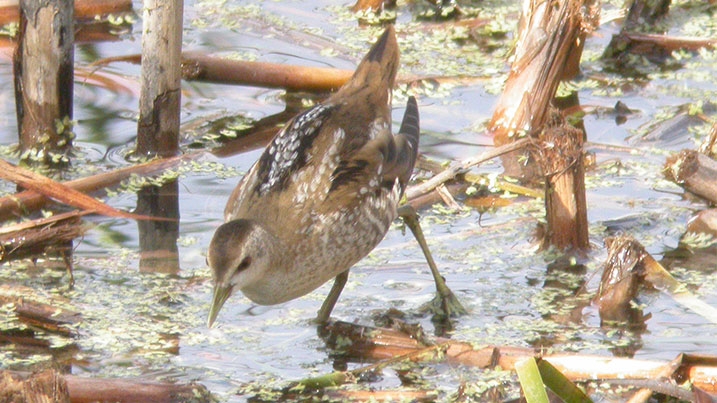
Further south at Arundel in 2011, a female arrived and stayed for 4 days in April, then in 2015 a juvenile turned up at Slimbridge for one day in October.
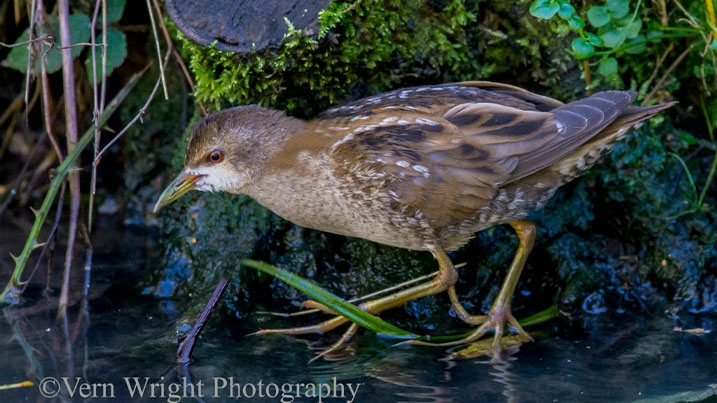
Having three little crake records at one site puts Slimbridge in a very exclusive club in a UK context – sharing the top spot only with the Attenborough Nature Reserve in Nottinghamshire.
These birds have a wide-ranging breeding area across much of eastern Europe and into Asia, wintering in southern Asia and Africa. There are also breeding populations across central Europe, particularly in The Netherlands.
It’s not outside the realms of possibility that with a changing climate and more suitable habitat in the UK, the species could one day breed here.
15. Collared pratincole
Glareola pratincola
153 UK record, 3 WWT records
Llanelli 2005
Pratincoles are something like a cross between a wader and a swallow. On the ground, they could be mistaken for a non-descript piece of mud, but once airborne they cleave through the air at great speed, hawking to catch their insect prey on the wing.
Collared pratincole have visted Llanelli twice, in 2005 and 2019, both of which stayed for two days in early July. Most recently, Slimbridge had a visit from a bird that stayed for 10 days at the end of October 2022.
WWT South Lake - Collared Pratincole performing nicely, right in front of Discovery Hide@slimbridge_wild #GlosBirds @WWTSlimbridge pic.twitter.com/DST1e8UxA1
— Tim Jukes (@TimJukes4) October 28, 2022
Note the chestnut underwing – key in separating this species from other pratincoles. Collareds normally breed in wetlands around the Mediterranean and western Asia, wintering south of the Sahara.
14. Franklin’s gull
Leucophaeus pipixcan
134 UK records, 2 WWT records
Martin Mere 1983
The first bird on our list from the Americas comes in the form of a Franklin’s gull. This gull of the prairies breeds in central Canada and the northern USA around prairie lakes.
They’re uncommon on the coasts of north America, hence rarely getting caught up in westerly-moving airflows. Slightly smaller than a black-headed gull, they sport a black hood in summer with notably dark grey plumage on the back.
There are two records of Franklin’s gull at WWT sites, the first being a mid-winter Martin Mere bird in 1983, the second being a bird at Llanelli in the last week of April 2014.
13. Lesser-white fronted goose
Anser erythropus
126 UK records, 65 WWT records
Slimbridge 1945
When Sir Peter Scott first began watching goose flocks along the Severn, he found in December of 1945 (nearly 80 years ago) the first Slimbridge record of lesser white-fronted goose.
Documenting these birds inspired him to protect these geese and create the then Severn Wildfowl Trust.
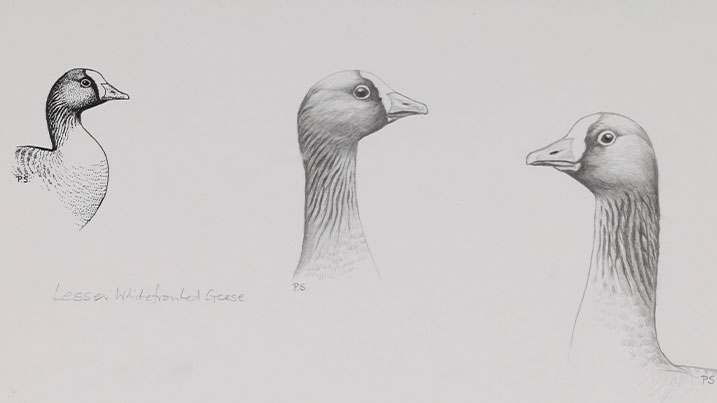
The only other WWT site record comes from two adults seen at Caerlaverock in February 1978, with Slimbridge seeing a record of the species in most years up until 1988. Since then, only a further four records have occurred, the last being in 2003. For decades, Slimbridge was seemingly guaranteed a yearly sighting, with a full 50% of all UK records coming from this site alone.
It’s thought that the decline in records has been from our nearest breeding population in Fenno-Scandinavia becoming critically endangered,. A warming climate also means that many arctic breeding birds stop short and spend the winter on the near-continent instead of making the sea crossing.
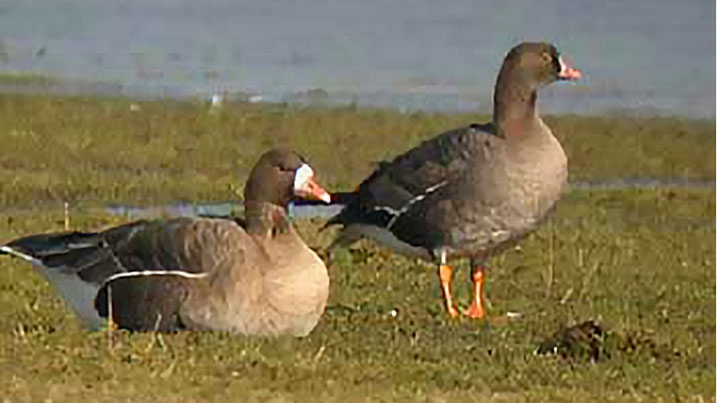
12. Pied-billed grebe
Podilymbus podiceps
86 UK records, 1 WWT record
Welney 1968
We need to go back to November 1968 at Welney for the only WWT record of pied-billed grebe. It was present for just three days and at the time it was only the eighth record of this species in the UK and the first in the east of England.
Similar in looks to our little grebe, pied-billed grebes sport a pale bill, which in the breeding season has a black band around it.
This is a common and widespread species throughout North and South America, present in northern USA and into Canada in the breeding season only.
11. Grey-cheeked thrush
Catharus minimus
78 UK records, 1 WWT record
Slimbridge 1990
Now for our only entry of a deceased bird, a grey-cheeked thrush that flew into a window at Slimbridge in October 1990. This species breeds across north America from Newfoundland in the east to Alaska in the west, migrating to winter in the Amazon basin.
10. Cackling goose
Branta hutchinsii
77 UK records, 5 WWT records
Welney 1984
Sticking with the American theme, cackling geese are native to the north American continent. They breed in northern Canada and Alaska, wintering in the western and southern USA through to Mexico.
Much like a small Canada goose, they were historically lumped together as one species up until around 20 years ago (there are still thought to be many subspecies). They can occasionally get caught up with Greenland-breeding barnacle geese and so find their way to UK shores.
There are multiple records of cackling geese at Caerlaverock over the years, the most recent being 2020, whilst Martin Mere saw a bird in 2012, Slimbridge in 2010 but the first goes to Welney in 1984.
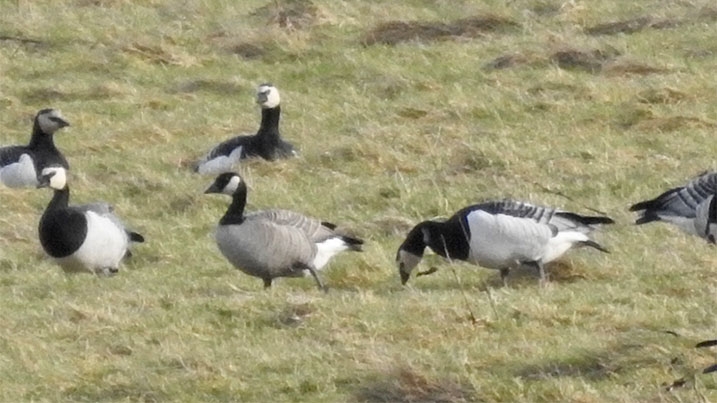
9. Sociable lapwing
Vanellus gregarius
56 UK records, 2 WWT records
Welney 1990
Sociable lapwing can usually be found breeding in Kazakhstan, moving to the Middle East, Sudan and India for winter.
Welney has been blessed by visiting birds twice in the past and both were long stayers. First in 1977 a bird was present for most of September. Then in October 1990, a bird stayed for 15 days.
The breeding population has crashed towards the turn of the century, and they are now IUCN listed as critically endangered. UK records reflect this, with only 8 seen since 2000.
8. Pacific diver
Gavia pacifica
43 UK records, 1 WWT record
Slimbridge 2009
There are just five diver species across the world, but here we focus on the one most rarely seen in the UK. Breeding across northern Canada, Alaska and the Russian far northeast, Pacific divers usually migrate to winter along the eastern seaboard of Canada and the USA down to Mexico, as well as Japan, south Korea and China – truly Pacific then, in their usual distribution.
It first appeared at Slimbridge on November 18th, staying in the upper Severn reaches until 27th when it was seen from Severn Beach and then flew south-west, not to be seen again.
7. Black-winged pratincole
Glareola nordmanni
41 UK records, 1 WWT record
Martin Mere 1997
Very similar in looks to the collared pratincole (but you guessed it, with a black underwing), black-winged pratincole are less frequent visitors to UK wetlands and WWT records reflect that.
Through August and September 1997 at Martin Mere, a black-winged pratincole took up residence, having travelled a fair way west. This wader breeds from Ukraine east to Kazakhstan, wintering in southern Africa.
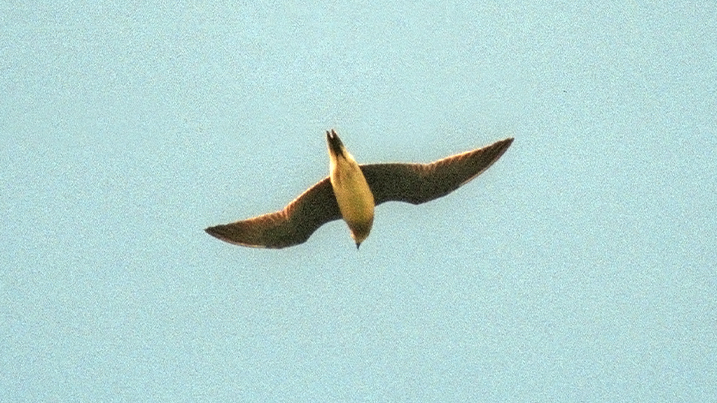
6. Eastern yellow wagtail
Motacilla tschutschensis
33 UK records, 1 WWT record
Steart Marshes 2020
You might well be familiar with the yellow wagtails that frequent UK wetlands in spring and summer. These belong to the group known as ‘western’ yellow wagtails, with dozens of sub-species included across Europe. So what of the eastern yellow wagtail, that breeds in eastern Russia and northern China, wintering in southern Asia to northern Australia?
They were, up until recently, treated as a single species, along with those in the west. Owing to different plumage, call and distribution, they are now considered a separate species.
Records though are increasing and any yellow wagtail found in the winter months should be scrutinised for eastern characteristics, as was the bird found at Steart Marshes in November 2020, staying for a lengthy 25 days.
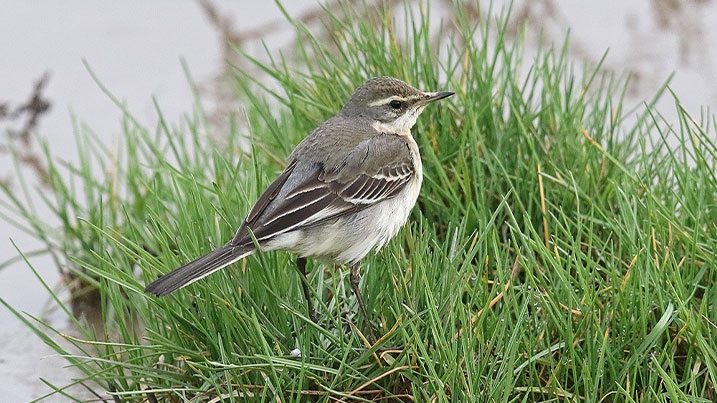
5. Baikal teal
Sibirionetta formosa
25 UK records, 1 WWT record
Castle Espie 2006
Our first mention of a rare duck (but the top five features three of them!) is a drake Baikal teal, a one-day record from 2006 at Castle Espie. Prior to this, it had spent just over a week at nearby Belfast Lough RSPB. A short staying, springtime bird saw it fully accepted as a wild record.
More recently, another drake was present for just one day in March 2019 at Welney. It then disappeared for over a month before being seen in April at nearby RSPB Ouse Washes, before moving to RSPB Nene Washes at March Farmers, until the end of May. However, this bird was then seen in Yorkshire and Northumberland until early July instead of leaving for breeding grounds at more northerly latitudes. The Records Committee of the British Ornithologists' Union therefore decided that it could likely be of captive origin and rejected the record, a controversial decision with many birders who travelled to see it at various sites.
This stunning duck species typically breeds in northeast Russia, wintering in Japan, South Korea and China.
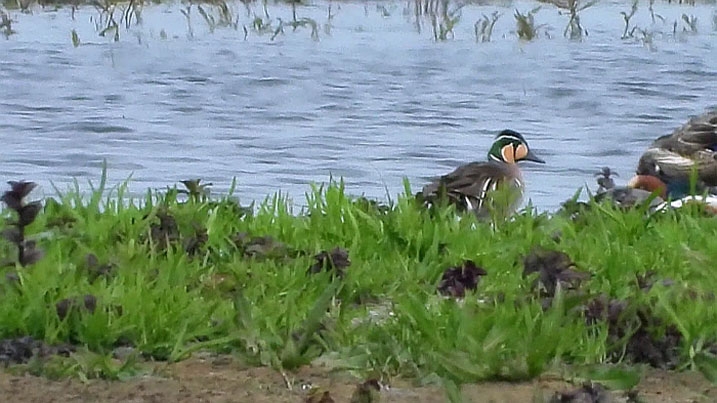
4. Falcated duck
Mareca falcata
14 UK records, 1 WWT record
Welney 1986
Another dapper Asian drake, and again at Welney but further back in time. The falcated duck was seen in December of 1986 and again in 1987, spending time in Northamptonshire in both of those years, too.
At the time, there were questions of its provenance, as the species is kept widely in captivity. It wasn’t until 32 years later in 2019 that the Records Committee accepted the record; it must have been a lengthy discussion.
The species breeds in eastern Asia and Russia, normally wintering in southeast Asia; southeast England of course being a rather different prospect in which to spend December.
3. White-tailed lapwing
Vanellus leucurus
13 UK records, 2 WWT records
Caerlaverock 2007
Into our top three rarest birds and another lapwing species from the east, with two individuals turning up relatively close together. White-tailed lapwing is a species that normally breeds in central Asia and migrates a medium-distance to winter in Sudan and India.
They’re distinctive, with long yellow legs, brown back plumage, white front and, obviously, a white tail.
There are 13 accepted UK records, with two of those having occurred at WWT sites. The first was at Caerlaverock in 2007 staying for just two days in early June. This bird went on to travel south to RSPB Leighton Moss in Lancashire to stay for another week.
Our second record was to come three years later, with a bird staying just two days in early July 2010 at Slimbridge. This was a bird even more up for a country-wide tour than the last. It was first found at Seaforth Lancashire Wildlife Trust 27th and 28th May. Then it was spotted right down at Rainham Marshes RSPB in Kent where it was seen on 7th July. Then up to WWT Slimbridge on 9th and 10th July and again back to Kent at Dungeness RSPB staying 11th – 21st July. It’s a lot of miles, but nothing compared to its original journey.
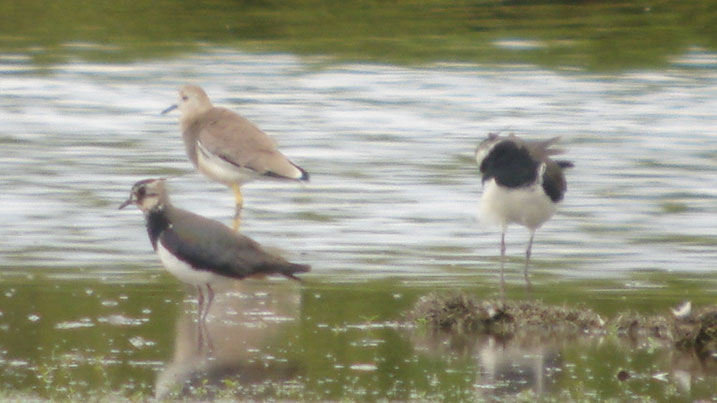
2. Canvasback
Aythya valisineria
12 UK records, 1 WWT record
Welney 1997
In at number two and it’s our final duck of the line up. Unlike the above two species from Asia, this one came from the opposite direction; a canvasback, relative of the common pochard and native to north America, breeding as far north as Alaska and wintering as far south as Mexico.
Back in 1996, a drake was first found in Kent in December, which then went on to visit sites in Norfolk including Welney for 6 weeks January-March 1997. It then reappeared at Welney early December 1997 staying until early March 1998. From there, it continued for some years popping up in spring and winter, at various sites in Essex and Kent, last being seen in Kent in March 2001.
A male also appeared in Cornwall for one day in April 2000 and Greater Manchester in July 2002 – could these records relate to the same individual? If so, this bird accounts for all UK records of canvasback, bar a female seen on Orkney in June 2000. That makes it much rarer than the ‘12’ records imply!
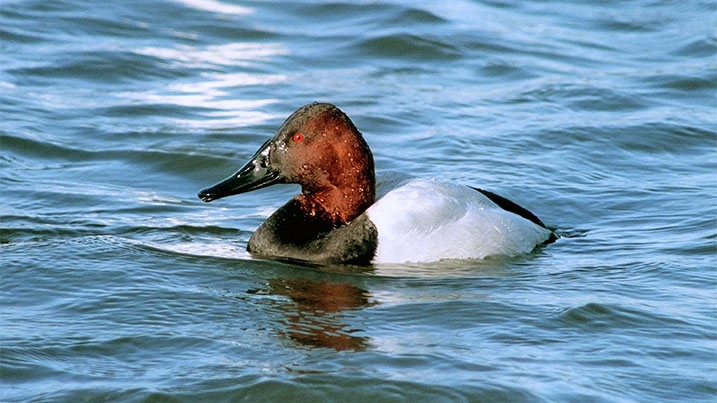
1. Snowy egret
Egretta thula
1 UK record, 1 WWT record
Caerlaverock, 2002
The title of ‘rarest of the rares’ goes to the Caerlaverock snowy egret.
A bird of the Americas, ranging from the northern USA right down to the southern end of Chile, they’re certainly widespread. But not usually as widespread as the bird that found itself in southwest Scotland in the autumn of 2001.
Proving to be a first for the UK, it was first noticed near Oban and was to be sighted on and off in the region for almost another 12 months, with Caerlaverock featuring on its trip-list in September of 2002.
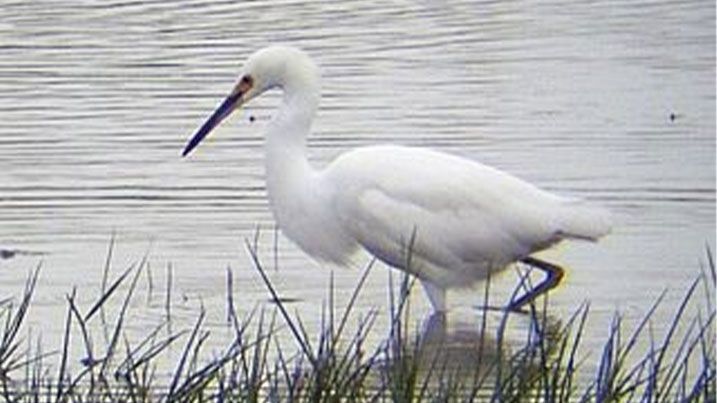
They’re closely related to little egret (Egretta garzetta) that is now familiar with many birders in the UK. The snowy differs in having yellow lores (the skin between the bill base and eye) and yellow backs to the legs, whereas little shows dark skin in both places.
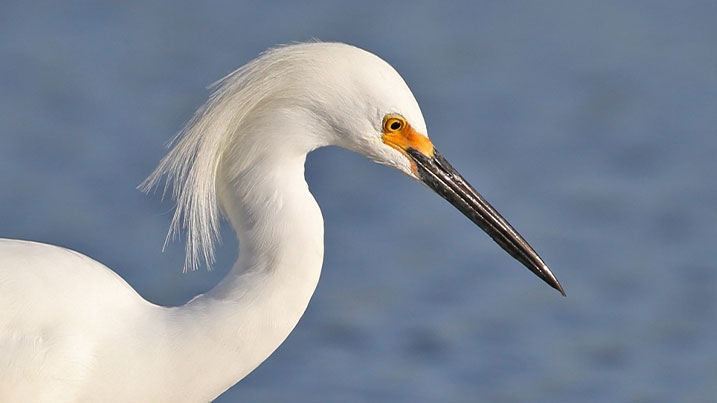
This is still the only record of snowy egret in the UK, but in April 2023 there was one residing on the Azores in the mid-Atlantic...so be sure to take a close look at the next little egret you see.
The best of the rest
We’ve stuck to species that have under 250 records in the UK, but there are so many more rare and scarce birds that have been seen at WWT sites, including:
Squacco heron, whiskered tern, laughing gull, black stork, blue-winged teal, lesser yellowlegs, long-billed dowitcher, spotted sandpiper, gull-billed tern, Caspian tern, Pallas’s sandgrouse, semipalmated sandpiper, little bittern, red-throated pipit, great snipe, Wilson’s phalarope, aquatic warbler, Bonaparte’s gull, broad-billed sandpiper, great reed warbler, Baird’s sandpiper, black-winged stilt, Savi’s warbler, Gyr falcon, snowy owl
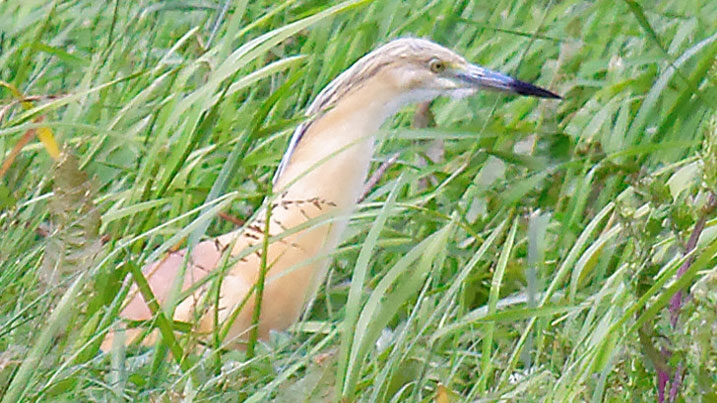
And who knows what might turn up this year as autumn progresses and is out there, waiting to be found.
Get down to your nearest wetland centre and find some rare birds
WWT would like to thank all featured bird photographers and the team at BirdGuides for providing the historical information and assisting with access to imagery. You can upload your past and future rarity photos to their gallery.
Header image: White-tailed lapwing at Caerlaverock 2007 © Frank Golding



